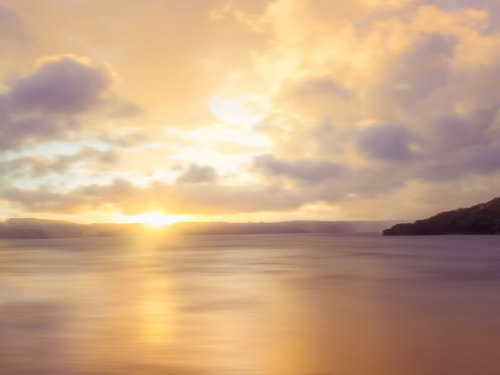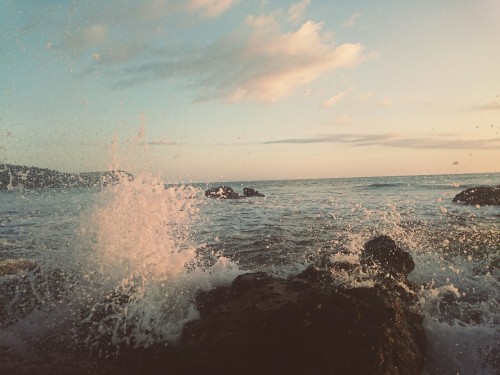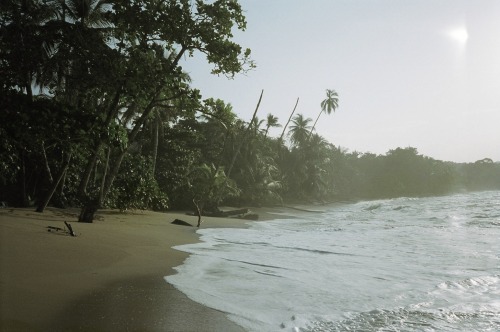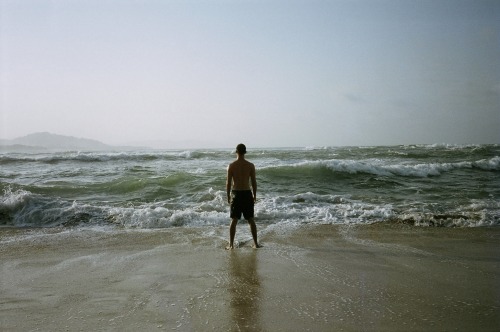#costa rica
Snapped and narrated by bassist Guy Berryman, this is your AAA glimpse behind-the-scenes at the band’s ‘Music of the Spheres’ cross-planet jaunt
ByNME | 5th April 2022
Ever wondered what it’s like to travel the globe with one of the biggest bands on the planet? ‘Course you have! As Coldplay embark on a world tour in support of poptastic latest album ‘Music of the Spheres’ (dubbed “a celestial beauty” in our four-star review), bassist Guy Berryman has shared an exclusive tour diary – comprised of photos he’s personally snapped and curated – with NME. Revel in the wonder of the group’s first dates in Costa Rica and Mexico, before he, Jonny (guitar), Will (drums) and Chris (vocals, keys, good vibes) sail the good ship ‘Play to the US, Europe and beyond.
Candid, eye-popping and narrated in Guy’s own words, this is your access-all-areas pass to life on the road with true musical giants of the 21st Century. Jordan Bassett
1. Self-portrait, wearing one of the tour tees I designed.

2. Jonny on the B stage, a few minutes before doors on opening night. Costa Rica was the perfect place to start the tour, especially as 99% of their national grid is renewable energy.

3. Here’s our fifth member / creative director / dear friend Phil Harvey chatting with Chris about the show

4. Final rehearsals. The view from my position onstage.

5. Jonny with his glow-in-the-dark guitar. He’s such an attention-seeker.

6. Lighting programming in Costa Rica. No matter how much you prepare, there’s always a lot to do in the final 36 hours before the first show.

7. Under the stage with Will. This space is bigger than most of the venues we played from 1998-2001.

8. The front row in Monterrey, Mexico. The fans on these first few shows have been incredible. They’ve turbo-charged the entire tour.

9. Every fan who comes to our concerts gets to wear an LED wristband, which literally makes them a part of the show. We’ve been using the wristbands for a decade now, but you never get over what an incredible spectacle they create (shown here in Monterrey).

10. Santo Domingo, Dominican Republic. It feels incredible to be back out in the world, playing music for people.

11. Chris in the spotlight, Monterrey.

12. Thank you and goodnight Mexico!


Image © Instagram user atzin90, accessed at Reddit here
[Aquatic Cat Number 2, and one I’m going out on a limb with. The only source I have for the dinama is the Reddit post linked above, as the mythology of the Talamancan people of Costa Rica isn’t readily available online, and much of the published work is in Spanish. Still, the information on Reddit is at least consistent with the other Talamancan stuff I could find, and the account passes my sniff test. Like, when cryptozoologists make up stuff about Indigenous beliefs, they minimize the supernatural elements to make it seem more like a “real animal”. But the combination of a blood drinking cat with prehensile tails, Predator-level camouflage and a death curse that can be broken by eating its poop, and also it can turn into a crab sometimes, is so wild that it has the ring of authenticity.]
Dinama
CR 9 NE Magical Beast
This creature resembles a saber-toothed cat, except that its paws are webbed and it has two long, prehensile tails. Its fur shifts colors, blending in with its environment.
A dinama is a cruel semi-aquatic feline with red hot blood and magical powers. They are blood feeders, and find the blood of humanoids the most satisfying. Most dinama plan their attacks to be shocking and destructive, using their power of water control to break bridges and dams, dry up fishing spots and cause mudslides for the purposes of mass suffering as well as to drive people away from their homes and to the monster’s lair. Dinamas usually hide away in tight spots, transforming themselves into a Tiny crab and sleeping in a crack or crevice.
The fur of a dinama acts as a sort of mirror that reflects the environment around them and makes them nearly transparent. This allows them to sneak up on their prey, which they then grab with their twin tails and constrict. Blood is drunk from the victim during this time, particularly at the elbows, knees and forehead. If a prey item is durable enough to survive a round or two of feeding, the dinama abducts them, leaving them unconscious but alive and feeding from them for several days before abandoning their desiccated body. Slaying a dinama does not end the threat it poses, as it inflicts a curse that heats up their slayer’s blood without bestowing the same protection against fire as the dinama possesses.
Dinama CR 9
XP 6,400
NE Large magical beast (shapechanger)
Init+6;Sensesdarkvision 60 ft., low-light vision, Perception +10, scent
Defense
AC23, touch 13, flat-footed 19 (-1 size, +3 Dex, +1 dodge, +10 natural)
hp104 (11d10+44)
Fort+11,Ref+10,Will+8
DR10/magic;Immunecurses;Resistfire 10; SR20
Defensive Abilities hot-blooded,perfect camouflage
Offense
Speed40 ft., swim 40 ft.
Meleebite +15 (2d6+5/19-20x3), 2 claws +15 (1d6+5), 2 tail slaps +13 (1d8+2 plus grab)
Space10 ft.; Reach5 ft.
Special Attacks augmented critical,blood drain (1d4 Con),constrict (1d8+7), death curse
Spell-like Abilities CL 11th, concentration +14
At will—control water
Statistics
Str21,Dex17,Con19,Int10,Wis16,Cha16
Base Atk +11;CMB+17 (+21 grapple); CMD31 (35 vs. trip)
FeatsBlind-Fight,Dodge, Improved Critical (bite), Improved Initiative, Iron Will, Multiattack
SkillsAcrobatics +14 (+18 when jumping), Heal +7, Perception +10, Stealth +24, Swim +20; Racial Modifiers +4 Acrobatics, +16 Stealth
LanguagesAquan
SQchange shape (crab, vermin shape II),hold breath
Ecology
Environmentwarm freshwater
Organizationsolitary or pair
Treasureincidental
Special Abilities
Augmented Critical (Ex) A dinama’s bite attack deals x3 damage on a successful critical hit.
Death Curse (Su) When a creature slays a dinama, it becomes targeted by the creature’s curse. Curse of Steaming Blood: save Will DC 18; effect creature gains vulnerability to fire and is permanently sickened from the pain of its hot blood. The save DC is Charisma-based.
Hot Blooded (Su) A creature that hits a dinama with a piercing or slashing weapon must succeed a DC 19 Reflex save or take 1d10 damage from its steaming hot blood. Manufactured weapons with the reach property do not endanger their wielder in this fashion. A creature that uses the blood drain ability against a dinama does not get a save against this damage. The save DC is Constitution based.
Perfect Camouflage (Su) A dinama’s fur changes color to match its environment instantly. It is treated as having a +16 racial bonus on Stealth checks, and can make Stealth checks without cover or concealment, or even when being observed. It has a 20% miss chance against attacks made against it by creatures that require sight, and a 50% miss chance against such creatures when underwater. This ability requires the dinama to be able to see its surroundings; a blind or sleeping dinama does not gain this effect.

Boruca masker, Costa Rica, by Vincent Eschmann
Osa pulchra blooming at the Huntington Botanical Garden, San Marino, California.
Osa pulchra is the holy grail of showy tropical flowering plants and most of us have never heard of it. This spectacular member of the Rubiaceae is exceptionally rare, both in the wild and in cultivation. It is quite unusual that a flowering plant of such exuberant beauty can go virtually unknown for so long in cultivation. Its close relatives of better fame Portlandia grandifloraandCubanola dominguensis, are familiar to some horticulturists in tropical climates.
While in bloom this magnificent shrub may superficially resemble a coffee tree with white Brugmansia flowers hung from its branches, but surpasses both in elegance. The pendent trumpet-shaped fragrant white flowers are thick in texture and 22 cm in length.
I have been working with a good friend, Dylan Hannon, Curator of the Rose Hills Foundation Conservatory for Botanical Science and Tropical Collections at the Huntington Botanical Gardens (San Marino, California) for the past 4 years to help insure this species’ survival ex situ within Hawai'i and in a few other suitable tropical countries.
Until 2007, this endangered species was only known from two disjunct populations in the south of Costa Rica, one on the Atlantic side and the other on the Pacific side in wet lowland rainforest. Less than 30 individuals exist between these two populations in which natural reproduction is very poor. In addition, because of the location and nature of both colonies, botanists have been hesitant to accept that these plants weren’t planted by humans at some point due to their proximity to human dwellings¹. Five years ago Osa pulchra was found for the first time in Bocas del Toro, Panama. University of Panama biologists Reyes Carranza and Fermín Hernández found this species during an environmental impact survey² . This exciting discovery may be the first record of a wild population.
Nearly all plants in cultivation outside Mesoamerica trace back to seven seedlings resulting from a pod collected in 1996 on a Missouri Botanical Garden expedition to the Osa Peninsula. About 100 F1 seedlings were raised at the Huntington and distributed to select conservatories in mainland USA in 2006¹. Notably showy specimens can currently be seen at the New York Botanical Garden, the Atlanta Botanical Garden and the Huntington.
Propagation of Osa pulchra is not for the impatient horticulturist. Growing from seed is the preferred method. Asexual propagation is possible but it exacts a sacrifice of the terminal stem. As with Portlandia,Osa have exhibited stubborn apical dominance, sometimes referred to as the ‘conifer effect’. Hand pollination must be carried out between two different clones because individual flowers are infertile. Gestation will take up to 11 months, upon which seeds must be sown with haste due to their limited window of viability.
¹ Hannon, DP. (2007). Osa pulchra: fragrant trumpet flowers from central america. Tropical Flowering Tree Society Quarterly, (Winter), 9-11.
² Aiello, A, Correa, M, Galdames, C, Alvarado, M, & Calderon, ML. (2007, August 31). Remarkable new plant record for panama. STRI News, Retrieved from striweb.si.edu/strinews/PDFs/August_31_2007.pdf
© Uluwehi Knecht (text) © Dylan Hannon (text)
Post link
Green Honeycreeper (male)
#birdphotography #bird_captures #birdsonearth #naturephotography #bb_of_ig #eye_spy_birds #allmightybirds #feather_perfection #birdsofinstagram #planetbirds #yourshotphotographer #CostaRica #birdselite #birdsonearth #birds_illife #travelgram #best_birds_of_world #bird_lovers_daily #bestbirds #kings_birds #bestbirdshots #earthcapture #birds_private #nuts_about_birds #bird_brilliance #birding #wildlifephotography #best_birds_of_ig #birds #raw_birds (at Papa’s Place)
https://www.instagram.com/p/B-MoGTegEbB/?igshid=11n11r4inncmb
Post link
This is the view from the “Peak of Death”, in Costa Rica. At 3,450 m above the sea level, it is the highest point of the country. In the past, most hikers died from hypothermia before reaching this point, or died later of pneumonia.
Post link
Lovely cloudy evening, in the mountains of Cartago Costa Rica. What you see in the background is called the Central Valley; that’s where Costa Rica’s main cities are located.
Post link
Revisiting that day on the Caribbean Coast of Costa Rica.
December, 2015.
(James Sanders)
Photo by @hermespittakos.tumblr.com
Post link
ESOOOOOOOOOOOOOOOOOOOOOOOOOOOOOOOOOOOOOOOOOOOOOOOOOOOOOOOOOOOOOOOOOOOOOOOOOoooooooooOOOO




















